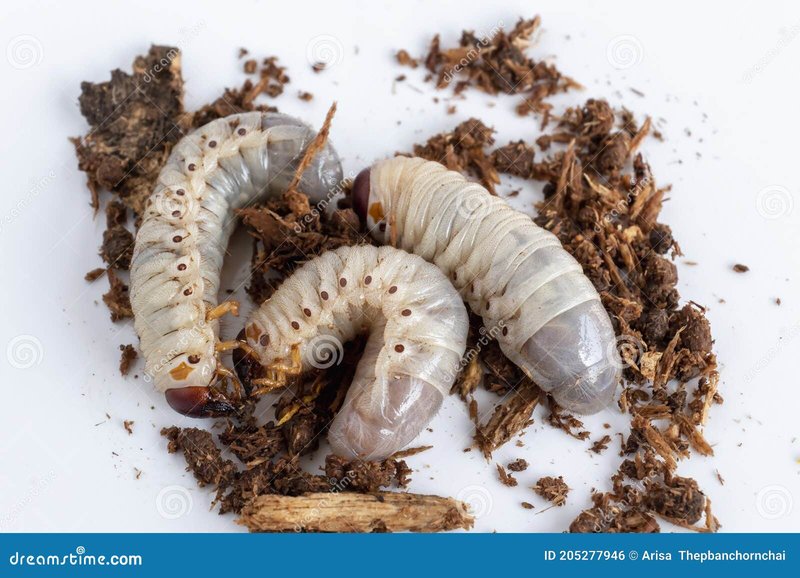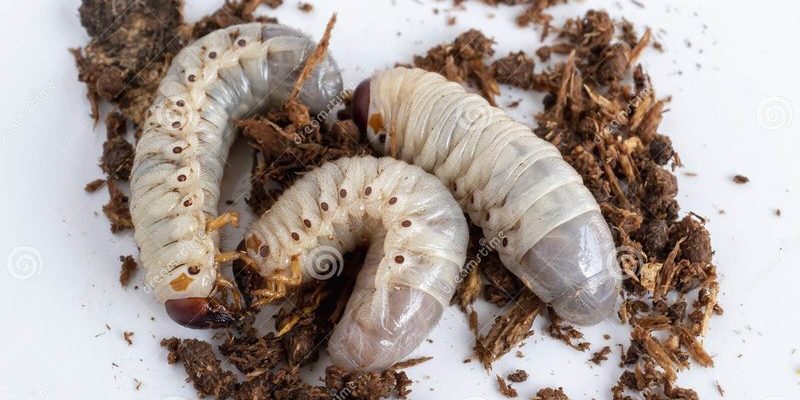
Grub worms, like those from the popular Black Soldier Fly (BSF), are packed with protein and essential nutrients. Plus, they can be raised on organic waste, making them an eco-friendly choice. So, if you’re curious about whether grub worms can be farmed as animal feed, let’s break it down together over a cup of coffee.
What Are Grub Worms?
Grub worms, often referred to as larvae, are the infant stage of certain insects, particularly flies. The most commonly farmed grub worms come from the Black Soldier Fly (Hermetia illucens). These larvae are small, white, and have a soft body, making them look a bit different from your average worm. They might not win any beauty contests, but they’re nutrient powerhouses.
One of the fascinating things about grub worms is their ability to convert organic waste into high-quality protein. They thrive on decaying fruits, vegetables, and even some agricultural byproducts. This ability not only helps in waste management but also reduces the carbon footprint associated with traditional feed production. Imagine turning your kitchen scraps into delicious and nutritious grub worms that can feed your animals!
The Benefits of Farming Grub Worms
Farming grub worms comes with a variety of perks that make them appealing as a feed source. Here are some standout benefits:
- High Nutritional Value: Grub worms are rich in protein, fats, vitamins, and minerals. They contain about 42% protein and 35% fat, making them an excellent choice for animal feed.
- Eco-Friendly: By utilizing food waste to raise grub worms, you contribute to reducing landfills and promote circular economy practices.
- Fast Growth: Grub worms grow quickly and can be harvested in just a few weeks. This efficient production cycle can lead to lower costs and higher output.
- Reduced Feed Costs: Since grub worms can be raised on waste, they can help farmers save on feed costs while providing quality nutrition.
You might be wondering how this all translates into real-world applications. Farmers who take the plunge into grub worm farming can significantly cut down on their reliance on conventional feed sources. Less waste, lower costs, and better nutrition? Sounds like a win-win, right?
How to Start Farming Grub Worms
If you’re interested in getting started with grub worm farming, it’s not as complicated as you might think. Here’s a step-by-step guide to help you along the way:
1. **Choose the Right Location:** Look for a space that’s dry, cool, and dark. A garage, shed, or basement can work well.
2. **Get Your Supplies:** You’ll need containers for the worms, bedding (like shredded paper or cardboard), and a source of organic waste for feeding.
3. **Select Grub Worms:** You can purchase Black Soldier Fly larvae from a reputable source. Ensure you’re getting healthy, viable worms.
4. **Set Up Your System:** Fill your containers with bedding, add the larvae, and start introducing organic matter as food. It’s essential to keep an eye on moisture levels as wet conditions can lead to mold.
5. **Harvesting:** After about 3-4 weeks, your grub worms will be ready to harvest. You can separate them from the bedding and feed them to your animals.
Starting your own grub worm farm can feel a bit daunting at first. But once you dive in, it’s a straightforward process that offers immense rewards—both nutritionally and environmentally.
Nutritional Composition for Animal Feed
The nutritional profile of grub worms is something that makes them stand out in the animal feed market. Let’s break down what makes them so beneficial:
| Nutrient | Grub Worms (% Content) |
| Protein | 42% |
| Fats | 35% |
| Calcium | 1.5% |
| Phosphorus | 0.5% |
This table shows you just how nutrient-dense grub worms can be. Animals that consume them, from chickens to fish, can benefit from this high-quality nutrition, leading to better growth rates and overall health. Not to mention, it might just cut down on the vitamins and supplements you need to provide.
Challenges in Grub Worm Farming
Of course, no farming endeavor is without its challenges. Here are some things to keep in mind if you decide to venture into grub worm farming:
- Temperature Control: Grub worms thrive in temperatures between 75°F to 85°F. Too hot or too cold can affect their growth.
- Pest Management: If you’re not careful, you could attract flies and other unwanted pests to your farm.
- Waste Management: While they convert waste into protein, you still need to manage the organic material efficiently to prevent odor and spoilage.
Navigating these challenges can feel overwhelming at times, but with a little research and preparation, you can create a successful grub worm farm that feeds your animals—and makes a positive impact on the environment.
Comparing Grub Worms to Traditional Feed Sources
So, how do grub worms stack up against traditional feed sources? Let’s take a quick peek:
– **Cost-Effectiveness:** Grub worms can be produced with far fewer resources than traditional grains. They thrive on organic waste, which can lower overall feed costs.
– **Sustainability:** Unlike grains that require extensive farming practices, grub worms contribute to waste reduction and environmental sustainability.
– **Nutritional Value:** While grains can provide some nutrition, grub worms offer a more balanced profile with higher protein and fat content.
In many cases, grub worms may prove to be a better alternative to conventional feeds. It’s all about weighing your options and figuring out what works best for your specific situation.
The Future of Grub Worm Farming
Looking ahead, the future of grub worm farming seems bright. As animal agriculture faces increasing scrutiny over sustainability and resource usage, grub worms could become a staple in animal feed production. Researchers and farmers alike are keen to explore this avenue further.
Moreover, as technology advances, we can expect improvements in farming techniques, efficiency, and even breeding programs for more robust grub worms. Innovations in this space could help maximize the benefits while addressing the challenges identified earlier.
In conclusion, munching on grub worms might not sound appetizing to us, but these little guys could be a game-changer in the animal feed industry. Whether you’re a farmer or just someone interested in sustainable practices, exploring grub worm farming could be the way to go. With their high nutritional value, sustainability potential, and fast growth, grub worms are undoubtedly worth considering as an animal feed source. Who knows? It might just be the next big thing in agriculture!

